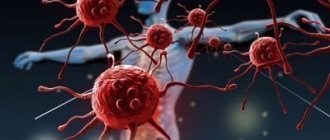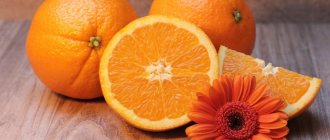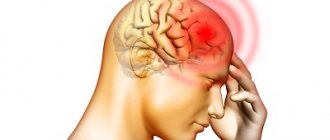Quite often on websites and forums dedicated to multiple sclerosis you can find the name of Ashton Embry, a Canadian scientist whose son was diagnosed with MS in 1995. Based on the scientific literature on MS, he attempted to determine the most likely factors that cause MS and develop effective therapy for his son.
He said he found scientific evidence suggesting that various dietary factors potentially play an important role in the onset and progression of multiple sclerosis. Based on these data, Embry developed a “nutritional strategy” that included both diet and the use of various nutritional supplements.
The main principles of the Embry diet were the elimination of certain foods, a significant reduction in the consumption of others, and a significant increase in the consumption of others. There is a book with recipes on the Embry website, which, whenever possible, I try to translate and post on my website.
What is the sattvic diet?
The sattvic diet is a high-fiber, low-fat vegetarian diet that many yoga enthusiasts follow.
In the practice of yoga, there are three types of foods that have different qualities and effects on health: sattvic, rajasic and tamasic ().
The word "sattvik" means "pure essence", and sattvic food is considered pure and balanced, and brings a sense of calm, happiness and mental clarity.
Rajasic foods are described as overly stimulating, and tamasic foods are believed to increase weakness and laziness (,).
Of the three types, sattvic foods are considered the most nutritious, and sattvic diets are associated with high micronutrient intake. According to Ayurveda, a sattvic diet is the best choice for maintaining longevity, physical strength and mental health ().
This may be because sattvic diets are rich in fresh, nutrient-rich foods, including fruits, vegetables, sprouted whole grains, fresh fruit juices, legumes, nuts, seeds, honey and herbal teas ().
Ayurveda recommends eating predominantly sattvic foods and avoiding rajasic and tamasic foods ().
Animal proteins, fried foods, stimulants such as caffeine, and white sugar are just some of the foods that are avoided when following a sattvic diet.
Summary:
The Sattvic diet is a high fiber, low fat vegetarian diet based on Ayurvedic principles.
Causes
The etiology of multiple sclerosis is still unknown; scientists believe that several factors, interacting with each other, can cause the disease.
Experts are also studying infectious agents that may play a role in pathogenesis. Understanding what causes multiple sclerosis will speed up the process of finding better treatments and ultimately cure or even prevent the disease.
There are several factors that can trigger the disease:
- immunological;
- environmental factors;
- infectious;
- genetic.
In multiple sclerosis, the myelin covering around nerve fibers in the central nervous system, as well as the nerve fibers themselves, are destroyed. Recent research has been able to identify the immune cells that escalate the attack, as well as the underlying factors that cause the cells to do so.
Research continues today. Scientists are trying to understand the disease process and explore what can slow down or stop the destruction of nerve fibers.
It is known that multiple sclerosis is more common in areas of the globe located further from the equator. Scientists have concluded that those people who get a smaller dose of vitamin D get sick more often. It is known to enhance immune defense and help the body fight immune-modulated diseases, which include multiple sclerosis. Researchers in Australia are studying the link between vitamin D deficiency and MS.
Many scientific papers suggest that bad habits, especially smoking, increase the risk of MS. Tests have shown that smoking provokes faster progression of the disease and aggravates symptoms. If the patient immediately gets rid of the bad habit, this can slow down the further development of multiple sclerosis.
Since childhood, a person has been exposed to attacks from numerous microbes and bacteria, which cause inflammatory processes in the body and can provoke the destruction of nerve fibers. Some scientists have concluded that perhaps the virus is one of the causes of the disease.
To confirm this theory, more than 10 viruses and bacteria were studied: measles, hepatitis virus, pneumonia, chlamydia. So far, no results have been found, but scientists continue to search for possible evidence of the involvement of viruses in the development of MS.
Multiple sclerosis is not a hereditary disease, but if one of the first-degree relatives (parents) in the family had MS, this increases the chance of such a pathology appearing in the child.
Some scientists believe that multiple sclerosis can develop due to a genetic predisposition and a reaction to any environmental agent. This triggers an immune system response that attacks the myelin.
Potential Health Benefits of a Sattvic Diet
The Sattvic diet is rich in nutrients and low in processed foods. For these reasons, it can provide many health benefits.
Involves consumption of whole, nutrient-dense foods
The sattvic diet is based on consuming whole, nutrient-dense foods, including vegetables, fruits, legumes and nuts.
Consuming all of these nutrient-rich foods can help improve your overall health by providing your body with the proteins, healthy fats, fiber, vitamins, minerals and antioxidants it needs to maintain proper body function ().
The Sattvic diet encourages eating healthy, whole foods and discourages fried and processed foods. A diet high in processed foods is known to be detrimental to overall health and significantly increases the risk of many diseases ().
May reduce the risk of chronic diseases
Although there have been no studies specifically on the sattvic diet, it is well known that diets that promote the consumption of whole, nutrient-dense foods tend to reduce the overall risk of developing chronic diseases, including diabetes, heart disease and some types of cancer.
In particular, vegetarian diets have been shown to provide impressive protective effects against the development of chronic diseases.
For example, a vegetarian diet is associated with significantly lower levels of cardiovascular disease risk factors such as high blood pressure and high LDL (bad) cholesterol. In addition, vegetarian diets may protect against diabetes and colorectal cancer (, ,).
Moreover, eating foods that make up a large part of a sattvic diet, including legumes, vegetables, fruits and nuts, may reduce the risk of developing chronic diseases and early death from all causes (, ,).
May promote weight loss
A sattvic diet is rich in fiber and plant foods, which can promote weight loss.
Studies have shown that people who follow a vegetarian diet tend to have lower body mass indexes and less body fat compared to non-vegetarians (, , ).
Many studies have also shown that vegetarian diets promote weight loss in overweight people (, ).
This may be due to several factors, including the high fiber intake and reduced calorie density of a vegetarian diet.
Summary:
The Sattvic diet is a vegetarian diet high in nutritious, whole foods. Eating whole, plant-based foods can reduce your risk of disease and promote healthy body weight.
A Few Dietary Guidelines That Can Harm You
Each diet has its own characteristics. During the treatment of multiple sclerosis, experts do not recommend using a number of dietary programs due to their low effectiveness. You should not resort to a diet that is low in fructose and pectin.
This diet for multiple sclerosis limits the consumption of fresh fruits and vegetables, and this can negatively affect the general health of the patient. Many people prefer the popular Cambridge diet, which is effective only in weight loss. But it is absolutely not suitable for correcting the diet for multiple sclerosis.
The notorious “cleansing” diets are absolutely unsuitable for people with this disease, since with their help not only wastes and toxins are removed from the body, but also useful substances. This diet restricts a person’s food intake too much. It must be remembered that strict restrictions in the daily diet can lead to serious stress for the entire body.
Potential Disadvantages
Although a sattvic diet can provide many benefits to your health, there are some disadvantages to consider.
Although the sattvic diet is rich in nutrients, it excludes many healthy foods.
For example, adherents of the sattvic diet are encouraged to avoid meat, poultry, fish and eggs - all of which are excellent sources of protein, healthy fats and various micronutrients.
In addition, a sattvic diet excludes foods that are considered rajasic or tamasic.
While some foods in these categories, such as high-fat fried foods and added sugars, are unhealthy, many are not.
Radishes, chili peppers, onions and mushrooms are just a few examples of extremely healthy foods that are prohibited in the sattvic diet simply because they fall into the rajasic or tamasic categories (, , , , ).
Coffee, caffeinated tea, and alcohol are also prohibited in the sattvic diet, which can make this diet difficult for those who enjoy these drinks.
Although the principles of the sattvic diet are based on Ayurvedic beliefs, they are not necessarily based on scientific research. Therefore, some restrictions are most likely unnecessary.
Summary:
The Sattvic diet limits the intake of many healthy foods and is not based on scientific research. The restrictive nature of this diet can make it difficult to stick to in the long term.
If you decide to follow the Embry Diet for Multiple Sclerosis
To some extent, for many people, the Embry diet may be the only “way out” to slow the progression and prevent multiple sclerosis. What many scientists are now noting is that many people with multiple sclerosis (and other autoimmune diseases) likely have a tendency toward food "sensitivities." This means that certain foods can cause inflammation in our systems. Many people begin to notice that their MS symptoms improve when they start a gluten-free diet or eliminate legumes, peanuts, and other possible allergens. Experimenting with temporarily eliminating certain foods from your diet is not a bad thing. And it is even very useful for all types of allergies and autoimmune diseases such as multiple sclerosis. If you decide to take supplements, be sure to consult with your doctor. If you decide to take the path of fighting multiple sclerosis, be sure to enlist the support of a qualified doctor.
List of foods you can eat on a sattvic diet
When following a sattvic diet, you should eat only approved foods and avoid foods in the rajasic and tamasic categories.
Keep in mind that recommendations for what foods are considered sattvic vary depending on the source, and many sources contradict each other in terms of what foods are allowed.
On a sattvic diet you can eat the following foods ():
- Land and sea vegetables : spinach, carrots, celery, potatoes, broccoli, seaweed, lettuce, peas, cauliflower, etc.
- Fruits and fruit juices : apples, bananas, papaya, mango, cherries, melons, peaches, guava, fresh fruit juices, etc.
- Sprouted grains : barley, amaranth, millet, quinoa, wild rice, etc.
- Nuts, seeds and coconut products : walnuts, pecans, Brazil nuts, pumpkin seeds, sunflower seeds, sesame seeds, coconut, flax seeds, etc.
- Fats and oils : olive oil, sesame oil, red palm oil, flaxseed oil, ghee, etc.
- Dairy and non-dairy products : high-quality milk, yogurt and cheese, almond milk, coconut milk, cashews, nuts and seed-based cheeses
- Legumes and legume-based products : lentils, mung beans, chickpeas, bean sprouts, tofu, etc.
- Drinks : water, fruit juice, decaffeinated herbal tea
- Sattvic spices and herbs : coriander, basil, nutmeg, cumin, fenugreek, turmeric, ginger, etc.
- Sweeteners : honey and jaggery
The above foods should make up the majority of your diet when following a sattvic diet. Keep in mind that there are stricter and more relaxed diet options.
Summary:
When following a sattvic diet, only sattvic foods can be consumed, such as land and sea vegetables, fruits and fruit juices, legumes and sprouted grains.
Recommended Supplements
Essential Supplements – Essential Supplements
- Vitamin D3: 6000-8000 IU. It is advisable to receive it in tablets that do not contain vitamin A.
- Omega-3 fatty acids: 5 g EPA + DHA (docosahexaenoic (DHA) and eicosapentaenoic (EPA) acids). The source of omega-3 fatty acids is fish oil, but care must be taken to ensure that the vitamin A content in fish oil capsules does not exceed 5000 IU. Adding 1 tablespoon of flaxseed oil can also be of practical value because it contains alpha-linolenic acid, a precursor to EPA and DHA.
- Calcium: 1000-1200 mg
- Magnesium: 500-600 mg
Basic supplements - vitamins
- Vitamin A: 5000 IU
- B vitamins: 100 mg
- Niacin (B3): 2 g
- Folic acid: 400 mcg
- Vitamin B12: 1-2 mg
- Vitamin C: 1 g
- Vitamin E (natural): 400 IU
Key Supplements - Minerals
- Zinc: 25-50 mg
- Copper: 1-2 mg
- Selenium: 200 mcg
- Manganese: 20 mg
- Iodine: 200 mcg
Key Supplements - Antioxidants
- Grape seed extract: 2-4 capsules
- Ginkgo biloba: 120 mg
- Alpha lipoic acid: 1200 mg
- Coenzyme Q10: 60-90 mg
- EGCG Max (epigallocatechin-3-gallate): 2 capsules (700 mg)
- Quercetin: 400 mg
- Bromelain: 400 mg
Key Supplements – Probiotics
- Acidophilus - 6 to 9 capsules (2 to 3 times daily, with each meal)
Additives recommended for use
- N Acetyl Cysteine (NAC): 500 mg This supplement supplement may increase glutathione levels which increases the level of antioxidant activity.
- Inosine: 2g. This supplement increases uric acid levels, which neutralizes peroxynitrite (a strong oxidizing agent that can cause serious damage to cell molecules). Please note that if uric acid levels are too high, gout may occur. The trick is to keep your uric acid levels as high as possible without causing gout.
Before presenting Embry's recommended list of supplements, I mentioned that it is controversial. The first question is the cost of additives. Even the most conservative estimate of the cost of a monthly course is quite impressive.
Given the costs of preventive and symptomatic treatments for multiple sclerosis (and in most cases, these are unavoidable costs), the decision to invest additional funds in such supplements is questionable. The second question that arose was the dosage of certain supplements. It's no secret that both vitamins and minerals can bring both benefits and harm. The dosage recommendations given by Embry raised some doubts in me.
For example, excess vitamin D accumulates in the body, sometimes in toxic amounts. The daily requirement of a healthy person for this vitamin is 400-800 IU, the recommended dosage by Embry is 6000-8000 IU.
Foods to Avoid
The Sattvic diet discourages the consumption of foods that are considered rajasic or tamasic.
For this reason, most animal products, highly processed foods, refined sugars and fried foods are restricted.
The following foods and ingredients should be avoided on a sattvic diet ():
- Added sugars and sweets : white sugar, high fructose corn syrup, candy, soda, etc.
- Fried foods : French fries, fried vegetables, fried confectionery, etc.
- Processed foods : chips, breakfast cereals, fast food, frozen dinners, microwave meals, etc.
- Refined grain products : white bread, bagels, cakes, cookies, etc.
- Meat, fish, eggs and poultry : chicken, beef, turkey, duck, lamb, fish, shellfish, whole eggs, egg whites, animal products such as collagen, etc.
- Some vegetables and fruits : onions, durian, green onions, pickles and garlic
- Some drinks : alcohol, sugary drinks, and caffeinated drinks such as coffee
In general, overly sour, salty or spicy foods should be avoided. Also, stale food such as food left out overnight is considered tamasic and should be avoided.
Summary:
Added sugars, processed foods, meat, eggs, poultry, fried foods, caffeinated drinks and alcohol are just some of the foods that are off-limits when following a sattvic diet.
3-day sample menu
A healthy sattvic diet should include plenty of foods, legumes and whole grains. According to most sources, high-quality dairy products can be consumed in moderation.
Here is an example of a 3-day menu on a sattvic diet.
1 day
- Breakfast : Sprouted quinoa with almond milk, berries, flax seeds and unsweetened coconut
- Lunch : chickpea and vegetable salad with tahini sauce
- Dinner : Mung beans, tofu and wild rice stew
Day 2
- Breakfast : natural yogurt with berries, walnuts and cinnamon
- Lunch : salad of fresh vegetables, tofu, lentils and paneer cheese
- Dinner : Chickpeas and vegetable curry with coconut
Day 3
- Breakfast : Oatmeal with stewed peaches and cashews
- Lunch : Quinoa salad with sweet potato, bean sprouts and kale
- Dinner : rice with mango, chickpeas and coconut milk
Summary:
The sattvic diet consists primarily of plant-based meals, which include whole grains, vegetables, fruits and legumes.
Summarize
- The Sattvic diet is a vegetarian diet based on Ayurvedic principles and is popular among yoga enthusiasts.
- Those following a sattvic eating pattern should avoid foods considered rajasic or tamasic, such as meat, eggs, refined sugar, spicy foods and fried foods.
- Although the sattvic diet includes many healthy foods and can provide health benefits, it is very restrictive and not based on scientific evidence. For these reasons, it may be better to stick to a less restrictive, plant-based diet.
Tags: Vegetarianism
- Related Posts
- Ayurvedic diet: what is it, benefits and disadvantages
- Do vegans eat honey?
- What is a vertical diet? Benefits, harms, nutrition plan
« Previous entry












